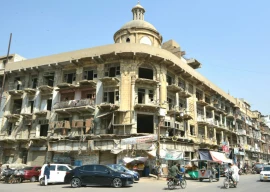
The Asian Development Bank (ADB) on Wednesday projected that Pakistan’s per capita economic growth rate will, for the consecutive second time, remain slightly negative in this fiscal year, indicating that the living standard of people will not improve.
The annual growth rate of Gross Domestic Product (GDP) per capita of Pakistan will be negative 0.2% in the fiscal year 2020-21, according to the ADB’s flagship annual publication, the Asian Development Outlook report.
The report further showed that the per capita GDP growth rate during the first year of the PTI government was slightly positive but turned negative 2.7% in the last fiscal year.
The GDP per capita indicates whether people’s living standards are improving not because of change in their incomes. However, for the next fiscal year, the ADB expects that GDP per capita will increase by 1.7% on back of an overall economic growth rate of 4%.
The ADB has projected 2% real economic growth rate for current fiscal year that is going to end in June – slightly better than the IMF projections but still lower than 3% forecast by the State Bank of Pakistan.
It has emphasized that economic recovery in Asia and Pacific region would depend on the progress in vaccination against the respiratory disease.
One downside risk is that even if the availability of vaccine improves its hesitancy can hamper the vaccination efforts, it added.
The ADB said that according to surveys conducted in November 2020 and March 2021, the share of the unvaccinated population that will not administer Covid-19 shots when available varies from 19% to 64%.
In case of Pakistan, as many as 35% respondents said that they would not take jabs, according to the ADB, which is the sixth highest refusal ratio in the Asian region.
The ADB said that its GDP growth forecast of 2% in the current fiscal year was based on easing Covid-19 restrictions.
Assuming a successful vaccine rollout and the implementation of economic reform under a stabilization programme with the IMF, GDP is expected to grow by 4% in FY2022 as consumption strengthens and investor confidence improves, it added.
However, the economic outlook is subject to downside risks, depending on persistent containment measures and success in achieving the vaccination target of 70% of the eligible population by the end of December 2021, according to the report.
It is vital for Pakistan to continue combatting the pandemic by rapidly deploying vaccines and continuing with reforms to support economic recovery, including strengthening social protection and supporting the private sector, said ADB Acting Country Director for Pakistan F Cleo Kawawaki.
The ADB advised that during recovery from Covid-19 priority should be to restore economic health by jump starting SMEs’ operations and improving their access to financial services.
An estimated 3.3 million SMEs in Pakistan engage some 40 million households in entrepreneurial activity, it added.
Kawaki said that improving access to finance for small and medium-sized enterprises was essential to unlocking business opportunities and stimulating new jobs.
The Manila-based lender has projected that agriculture sector growth may slow down mainly because of a sharply lower cotton harvest following heavy rains, pest attacks and continued contraction in the cultivated area.
But the industry and services sectors are showing signs of recovery in this year with fiscal incentives granted to key construction and export industries and subsidized credit offered to protect employment and stimulate growth. Industry appears poised for robust growth led by manufacturing and construction.
Unlike the World Bank and the IMF, the ADB sees a gradual reduction in public debt to GDP ratio, subject to the condition that stabilization efforts would be sustained and economic recovery is timely.
The ADB has a forecast of an average 8.7% inflation rate for this year, which may slow down to 7.5% next year. The 8.7% inflation rate projection is based on the government subsidies for wheat and sugar imports, its careful monitoring of prices for essential commodities and improved food supply later in the fiscal year.
The lender said that tax revenue remained strong with a doubling of the petroleum levy to the equivalent of 0.6% of GDP but this could not offset the decline in nontax revenue.
Spending decreased from 10.1% of GDP in the first half of FY2021 to 9.9% as lower defence and development expenditure more than compensated for higher outlays for health care and social spending.
The current account deficit is projected to widen again in FY2022 to equal 2% of GDP on robust growth in imports as recovery strengthens and the surge in remittances tapers.


1729662874-0/One-Direction-(1)1729662874-0-165x106.webp)





1732084432-0/Untitled-design-(63)1732084432-0-270x192.webp)









COMMENTS
Comments are moderated and generally will be posted if they are on-topic and not abusive.
For more information, please see our Comments FAQ